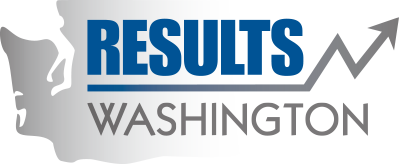Appendix 3: Information to include for new measures
New measures should include all the information necessary below for internal and external readers to understand what you are measuring, why it is important, what questions it answers for you and what kind of decisions it can support. Readers should be able to understand how the results compare to your expectations and whether they are better, worse, or neutral over time. They should also have the information to understand any anomalies that might be impacting the results for specific time periods.
For over 15 years, Results Through Performance Management (RPM) has been Washington’s statewide performance management system that agencies use to report their performance measures and data. We are making improvements to RPM and are also considering other solutions for the future. In the meantime, OFM publishes a RPM user guide and a short training in The Learning Center for agency staff. For technical help with RPM, please contact OFM IT support.
Below are the fields that should be completed for each measure:
- Focusing question – this is the most important piece of information to share. What question is this measure intended to answer to inform future decisions or corrective action/improvements?
- Relevance – this works together with the focusing question. Why is this measure important? How will answering the focusing question impact your future work? If you don’t have an answer to this question, this may not be the right performance measure. For example, if the focusing question is “are we processing applications fast enough for applicants to rely on us?” the relevance might be that it informs decisions about resourcing and whether process improvements are needed.
- Title – your title should describe, as simply as possible, what is being measured. A good formula to use is “The [unit] of [what is being measured] per [time period]”. A few examples:
- The average number of days it takes to fill a posted job vacancy per quarter
- Percentage of trainees finding a job within 30 days of training per quarter
- The ratio of wetland acres cleaned of invasive species per year
Note: these are all neutral statements describing the measure itself, not the results we are looking for. A person reading the title should get a very general idea of what it is about so that they can decide whether to select it and read further.
- Definition – This is more technical. How are you defining the words you use in your title? How is the data collected and calculated? This information is critical for readers to understand, especially when trying to compare with information from other sources. A few examples to consider:
- What is excluded from the data? If this measure relates to the number of cases, does it include cases that were withdrawn before any work was done?
- How is it measured? If this measure counts people, is it a point-in-time count or an average over the time period, or a cumulative total?
- Reporting frequency and time period – How frequently should this measure be reported, and for how long? As a general rule, state law requires measures to be reported at least quarterly. However, a different cadence makes more sense for many types of measures: such as those relating to the school year or legislative session, and data that takes months to compile and clean after collecting. Ongoing operational measures and indicators are most helpful when they are reported over many years, allowing trends to develop and inform us on what is natural fluctuation and what is a signal that things have changed. But many critical strategic measures have shorter timelines. If a measure has an expected end-date, communicate this clearly from the beginning.
- Determinant(s) of equity – Which determinant(s) of equity does this measure relate to? Determinants of equity are detailed on Appendix 2: Specific Measures Required by Other Agencies, the Office of Equity’s Determinants of Equity webpage as well as the Equity Hub drop-down menu.
- Goal areas – Which of the Governor’s goal areas does this measure relate to? For the governor’s goal areas, visit the Office of the Governor’s Efficient Government webpage.


 previous
previous